Home »
Misc »
Basketball how to play the game
Basketball how to play the game
Basketball Basics - The Rules, Concepts, Definitions, and Player Positions
The rules of basketball, thankfully, are fairly straightforward.
However, if youre coaching younger players, these rules can be easily forgotten once they take the floor.
The three-second rule (which well discuss later in this article) is just one of many great examples.
But before you can teach the rules to your team, you must know them yourself.
So keep reading, because by the end of this article, youll be up to speed on all the basketball rules so you can teach your players and help them develop throughout the season!
The Rules
Basketball is a team sport.
Two teams of five players each try to score by shooting a ball through a hoop elevated 10 feet above the ground.
The game is played on a rectangular floor called the court, and there is a hoop at each end.
The court is divided into two main sections by the mid-court line.
If the offensive team puts the ball into play behind the mid-court line, it has ten seconds to get the ball over the mid-court line.![]()
If it doesn't, then the defense gets the ball.
Once the offensive team gets the ball over the mid-court line, it can no longer have possession of the ball in the area behind the midcourt line.
If it does, the defense is awarded the ball.
Basketball Court 1The ball is moved down the court toward the basket by passing or dribbling. The team with the ball is called the offense. The team without the ball is called the defense.
The defense tries to steal the ball, contest shots, deflect passes, and garner rebounds.
Points
When a team makes a basket, they score two points and the ball goes to the other team.
If a basket, or field goal, is made outside of the three-point arc, then that basket is worth three points. A free throw is worth one point.
Free throws are awarded to a team according to some formats involving the number of fouls committed in a half and/or the type of foul committed.
Fouling a shooter always results in two or three free throws being awarded the shooter, depending upon where he was when he shot. If he was beyond the three-point line, then he gets three shots.
If he was beyond the three-point line, then he gets three shots.
Other types of fouls do not result in free throws being awarded until a certain number have accumulated during a half (called team fouls).
Once that number is reached, then the player who was fouled is awarded a '1-and-1' opportunity. If he makes his first free throw, he gets to attempt a second. If he misses the first shot, the ball is live on the rebound.
Game Clock
Each game is divided into sections, and all levels have two halves.
In college, each half is twenty minutes long.
In high school and below, the halves are divided into eight (and sometimes, six) minute quarters. In the pros, quarters are twelve minutes long.
There is a gap of several minutes between halves. Gaps between quarters are relatively short.
If the score is tied at the end of regulation, then overtime periods of various lengths are played until a winner emerges.
Basket Assignment and Tip-Off
Also, each team is assigned a basket or goal to defend.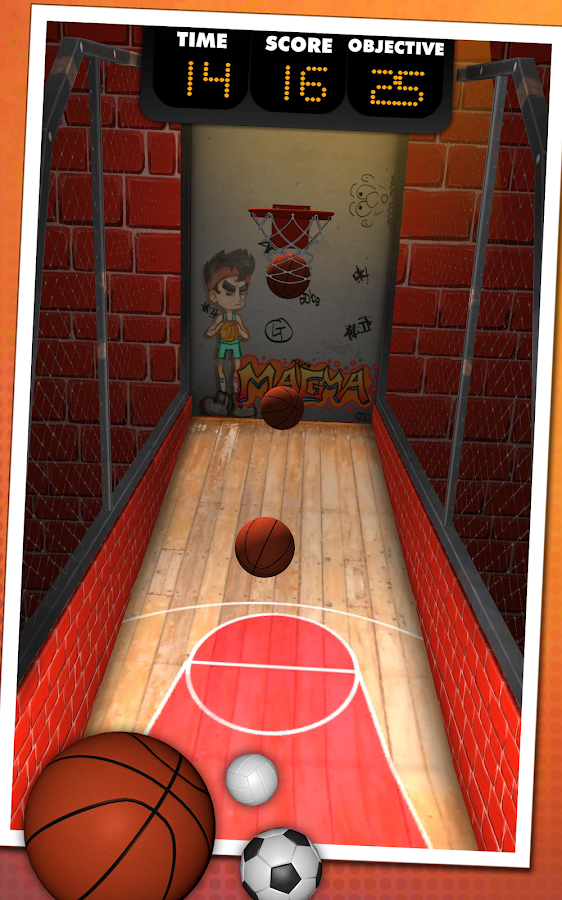
This means that the other basket is their scoring basket.
At halftime, the teams switch goals.
The game begins with one player from either team at center court.
A referee will toss the ball up between the two. The player that gets his hands on the ball will tip it to a teammate. This is called a tip-off.
(NOTE: Looking for a simple plan you can follow with your youth team? Or just some additional drills and plays to keep your players engaged and set them up for success? Check out our FREE 72 Winning Youth Drills and Plays eBooks to help your players develop AND have fun doing it.)
Fouls and Violations
In addition to stealing the ball from an opposing player, there are other ways for a team to get the ball.
One such way is if the other team commits a foul or violation.
FOULS
Recommended Resources for Youth Coaches
Coaching Youth Basketball Successfully
60+ Youth Basketball Drills
Simple Offense for Youth Basketball
Personal fouls: Personal fouls include any type of illegal physical contact.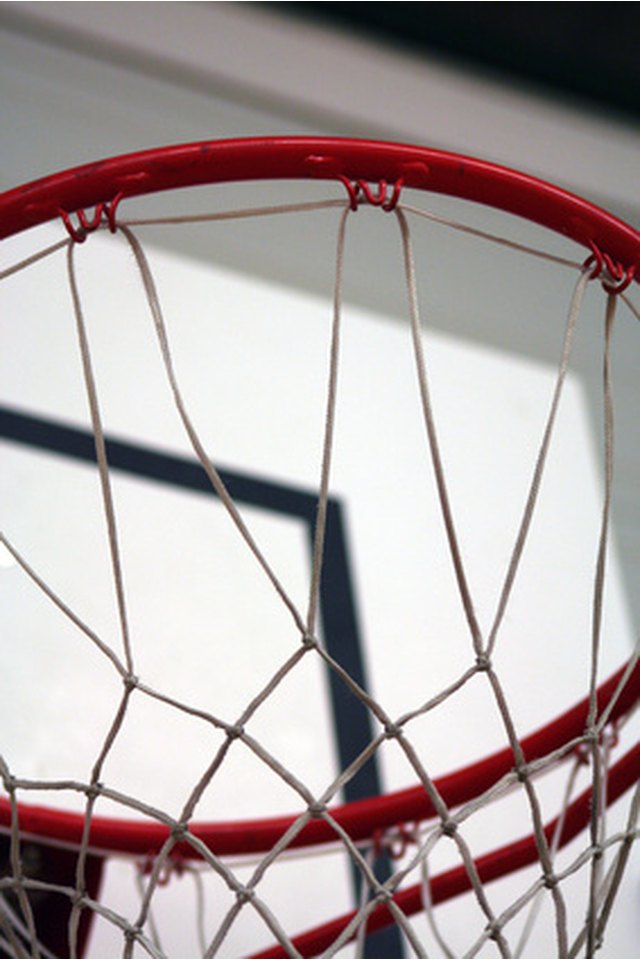
- Hitting
- Pushing
- Slapping
- Holding
- Illegal pick/screen -- when an offensive player is moving. When an offensive player sticks out a limb and makes physical contact with a defender in an attempt to block the path of the defender.
Personal foul penalties: If a player is shooting while a being fouled, then he gets two free throws
if his shot doesn't go in, but only one free throw if his shot does go in.
- Three free throws are awarded if the player is fouled while shooting for a three-point goal and they miss their shot. If a player is fouled while shooting a three-point shot and makes it anyway, he is awarded one free throw. Thus, he could score four points on the play.
- Inbounds. If fouled while not shooting, the ball is given to the team the foul was committed upon.
They get the ball at the nearest side or baseline, out of bounds, and have 5 seconds to pass the ball
onto the court.
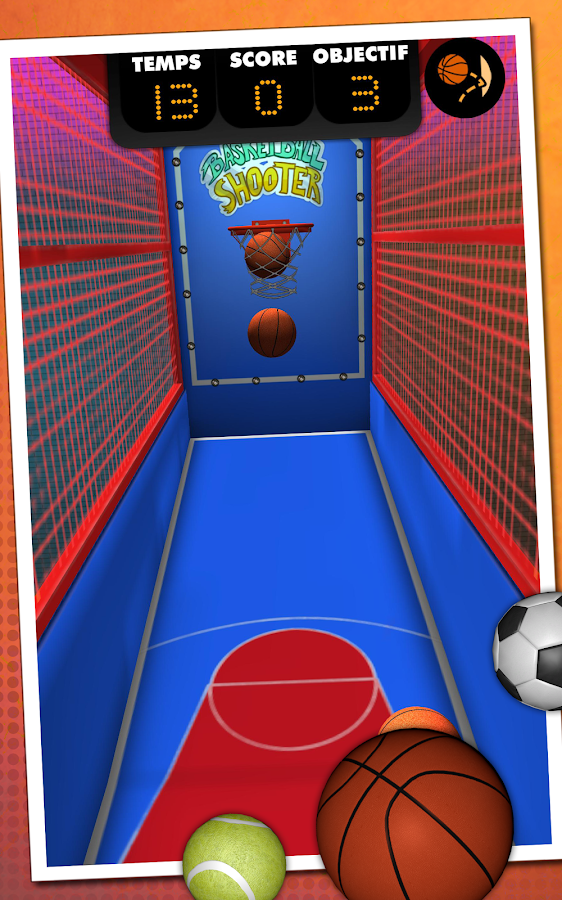
- One & one. If the team committing the foul has seven or more fouls in the game, then the player
who was fouled is awarded one free throw. If he makes his first shot, then he is awarded another free
throw.
- Ten or more fouls. If the team committing the foul has ten or more fouls, then the fouled player
receives two free throws.
Charging. An offensive foul that is committed when a player pushes or runs over a defensive
player. The ball is given to the team that the foul was committed upon.
Blocking. Blocking is illegal personal contact resulting from a defender not establishing
position in time to prevent an opponent's drive to the basket.
Flagrant foul. Violent contact with an opponent. This includes hitting, kicking, and punching.
This type of foul results in free throws plus the offense retaining possession of the ball after the free throws.
Intentional foul. When a player makes physical contact with another player with no reasonable effort to
steal the ball.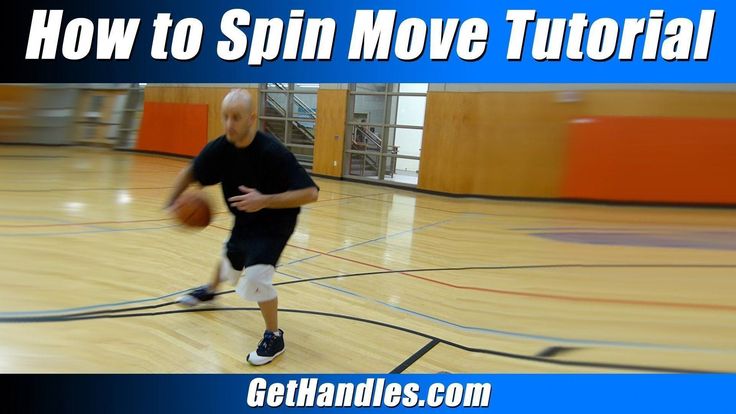 It is a judgment call for the officials.
It is a judgment call for the officials.
Technical foul. Technical foul. A player or a coach can commit this type of foul. It does not involve
player contact or the ball but is instead about the 'manners' of the game. Foul language, obscenity, obscene
gestures, and even arguing can be considered a technical foul, as can technical details regarding filling in the
scorebook improperly or dunking during warm-ups.
VIOLATIONS
Walking/Traveling. Taking more than 'a step and a half' without dribbling the ball is traveling.
Moving your pivot foot once you've stopped dribbling is traveling.
Carrying/palming. When a player dribbles the ball with his hand too far to the side of or, sometimes, even under the ball.
Double Dribble. Dribbling the ball with both hands on the ball at the same time or picking up the
dribble and then dribbling again is a double dribble.
Held ball. Occasionally, two or more opposing players will gain possession of the ball at the same time. In order to avoid a prolonged and/or violent tussle, the referee stops the action and awards the ball to one
team or the other on a rotating basis.
In order to avoid a prolonged and/or violent tussle, the referee stops the action and awards the ball to one
team or the other on a rotating basis.
Goaltending. If a defensive player interferes with a shot while it's on the way down toward the basket,
while it's on the way up toward the basket after having touched the backboard, or while it's in the cylinder
above the rim, it's goaltending and the shot counts. If committed by an offensive player, it's a violation and the ball is awarded to the opposing team for a throw-in.
Backcourt violation. Once the offense has brought the ball across the mid-court line, they cannot go back
across the line during possession. If they do, the ball is awarded to the other team to pass inbounds.
Time restrictions. A player passing the ball inbounds has five seconds to pass the ball. If he does not,
then the ball is awarded to the other team. Other time restrictions include the rule that a player cannot have the
ball for more than five seconds when being closely guarded and, in some states and levels, shot-clock restrictions
requiring a team to attempt a shot within a given time frame.
Player Positions
Center. Centers are generally your tallest players. They generally are positioned near the basket.
Offensive -- The center's goal is to get open for a pass and to shoot. They are also responsible for blocking
defenders, known as picking or screening, to open other players up for driving to the basket for a goal. Centers
are expected to get some offensive rebounds and put-backs.
Defensive -- On defense, the center's main responsibility is to keep opponents from shooting by blocking shots
and passes in the key area. They also are expected to get a lot of rebounds because they're taller.
Forward. Your next tallest players will most likely be your forwards. While a forward may be called
upon to play under the hoop, they may also be required to operate in the wings and corner areas.
Offensive -- Forwards are responsible to get free for a pass, take outside shots, drive for goals, and rebound.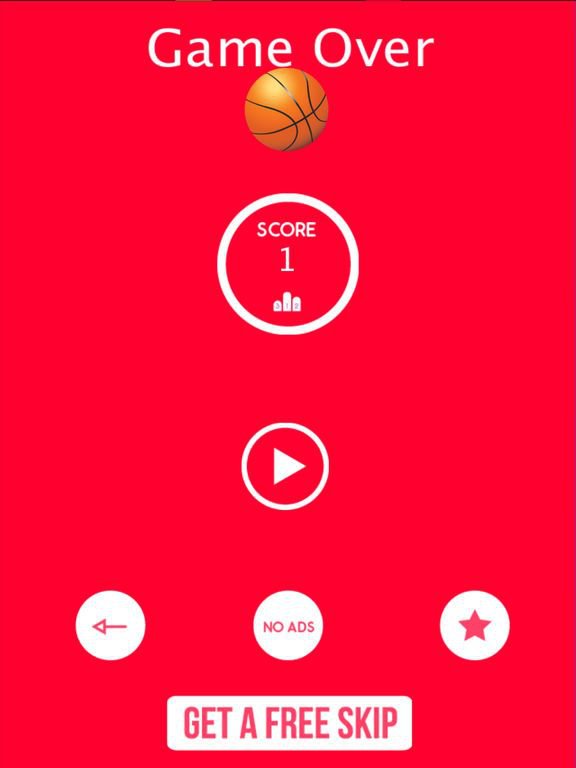
Defensive -- Responsibilities include preventing drives to the goal and rebounding.
Guard. These are potentially your shortest players and they should be really good at dribbling fast, seeing
the court, and passing. It is their job to bring the ball down the court and set up offensive plays.
Offensive -- Dribbling, passing, and setting up offensive plays are a guard's main responsibilities. They also
need to be able to drive to the basket and to shoot from the perimeter.
Defensive -- On defense, a guard is responsible for stealing passes, contesting shots, preventing drives to the
hoop, and for boxing out.
Where Should New Coaches Start?
Now that you understand the fundamentals, the smartest plan you can follow from here is to help players develop those skills with structured drills and practices.
Our FREE 72 Winning Youth Drills and Plays resource is designed for coaches like you, to help in:
- Understanding the proper technique for the most important skills like shooting, passing and dribbling
- Teaching players these skills using easy-to-follow drills
- Giving players structure with simple plays designed for youth athletes
It even includes diagrams and step-by-step instructions so you can help your players develop AND have fun doing it. ..
..
Even if you have little or no basketball (or coaching) experience.
Click the link below, and well send you a copy right away (along with a Special "skill development" Bonus for your players).
Get My FREE Drills and Plays, plus a Special Bonus.
To your basketball success!
Jeff and Joe Haefner
P.S. Here are a few additional resources to help you master basketball fundamentals:
- Shooting
- Passing
- Dribbling
- Lay ups
- Jump stops
- Pivoting and footwork
- Jab steps
- Screening
- Cutting
- Defense
- Rebounding
These are all critical fundamentals to master because they'll make you and your team better, no matter what age level or situation you might be in.
Basketball Rules: How To Play Basketball
Photo credit: Keith Allison (Source)
Basketball dates back as far as 1891 and since then has evolved into a sport played around the world. Many countries have adopted the game such as Russia, Great Britain, Germany, Spain and parts of Asia, but it is America where the biggest and most lucrative league in the world lives: the NBA (National Basketball Association).
Many countries have adopted the game such as Russia, Great Britain, Germany, Spain and parts of Asia, but it is America where the biggest and most lucrative league in the world lives: the NBA (National Basketball Association).
Object of the Game
The object of basketball is to throw the ball (basketball) into a hoop to score points. The game is played out on a rectangular court and depending on which section of court you successfully throw a ball into the basket will depend on how many points are scored. The ball can be moved around the by dribbling or passing the ball. At the end of the game the team with the most points is declared the winner.
Players & Equipment
Each team is made up of 12 players with only 5 allowed on the court at any time. The positions are broken up into Point Guard, Defensive Guard, Center, Offensive forward and Defensive Forward. Each player will then take up a position on the court but are allowed to move around as they please.
The court is a rectangular shaped and measures 91 feet long and 50 feet wide. There is a halfway line in which a small circle is found in the centre; this is where the game starts with a tip off (the ball is thrown in the air by the referee and a player from each team tries to win possession for their team). At each end of the court are two baskets both 10 feet in height. A three point arc is the outside ring, whilst in the middle of that is the key which includes a free throw line.
There is a halfway line in which a small circle is found in the centre; this is where the game starts with a tip off (the ball is thrown in the air by the referee and a player from each team tries to win possession for their team). At each end of the court are two baskets both 10 feet in height. A three point arc is the outside ring, whilst in the middle of that is the key which includes a free throw line.
All that is needed to play is a court and basketball. Teams must wear matching strips with some players choosing to wear gum shields and face masks for protection.
The game is split up into 4 twelve minute quarters. In between the 2 nd and 3rd quarter is a 15 minute half time interval.
Scoring
There are three scoring numbers for basketball players. Any basket scored from outside the three point arc will result in three points being scored. Baskets scored within the three point arc will result in two points being scored. Successful free throws will result in 1 point being scored per free throw.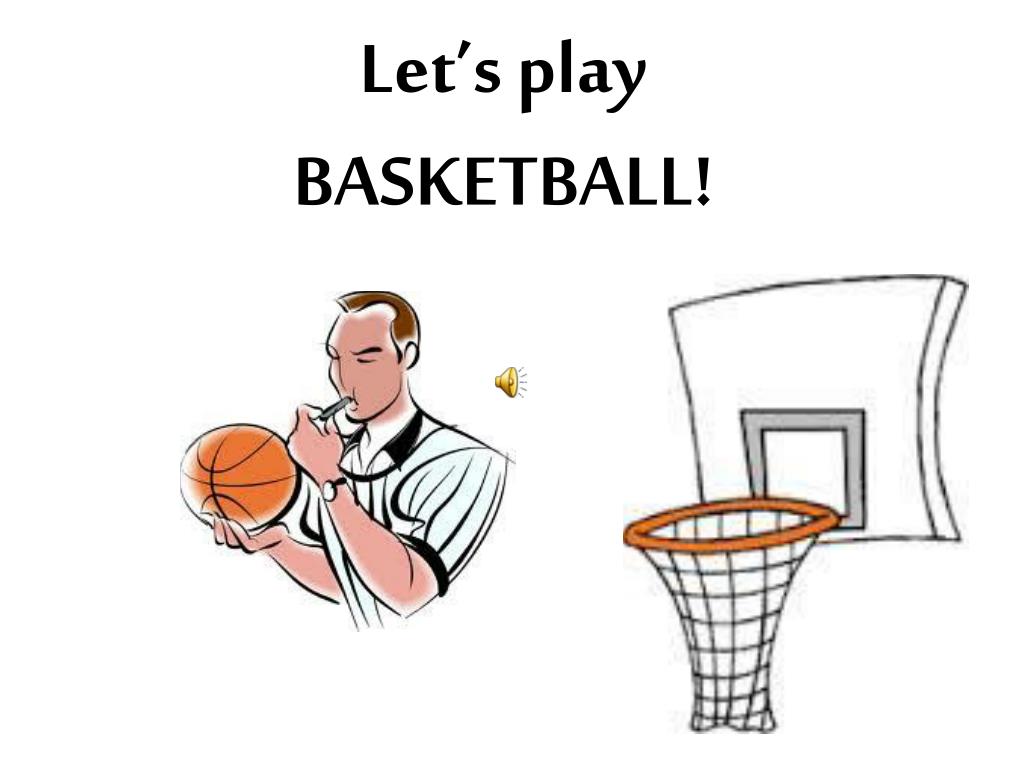 The number of free throws will depend on where the foul was committed.
The number of free throws will depend on where the foul was committed.
Winning the Game
Winning a game of basketball is pretty simple; score more points than your opponents in the allotted game time. If the scores are tied at the end then an extra quarter will be played until a winner is found.
Rules of Basketball
- Each team can have a maximum of 5 players on the court at any one time. Substitutions can be made as many times as they wish within the game.
- The ball can only be moved by either dribbling (bouncing the ball) or passing the ball. Once a player puts two hands on the ball (not including catching the ball) they cannot then dribble or move with the ball and the ball must be passed or shot.
- After the ball goes into a team’s half and they win possession back the ball must then make it back over the half way line within 10 seconds. If the ball fails to do so then a foul will be called and the ball will be turned over.
- Each team has 24 seconds to at least shot at the basket.
 A shot constitutes either going in the basket or hitting the rim of the basket. If after the shot is taken and the ball fails to go in the basket then the shot clock is restarted for another 24 seconds.
A shot constitutes either going in the basket or hitting the rim of the basket. If after the shot is taken and the ball fails to go in the basket then the shot clock is restarted for another 24 seconds.
- The team trying to score a basket is called the offence whilst the team trying to prevent them from scoring is called the defence. The defence must do all they can to stop the offence from scoring by either blocking a shot or preventing a shot from being fired.
- After each successful basket the ball is then turned over to the opposition.
- Fouls committed throughout the game will be accumulated and then when reached a certain number will be eventually be awarded as a free throw. A free throw involves one playerfrom the offensive team (the player fouled) to take a shot unopposed from the free throw line. Depending on where the foul was committed will depend on the number free throws a player gets.
- Violations in basketball include travelling (taking more than one step without bouncing the ball), double dribble (picking the ball up dribbling, stopping then dribbling again with two hands), goaltending (a defensive player interferes with the ball travelling downwards towards the basket) and back court violation (once the ball passes the half way line the offensive team cannot take the ball back over the half way line).
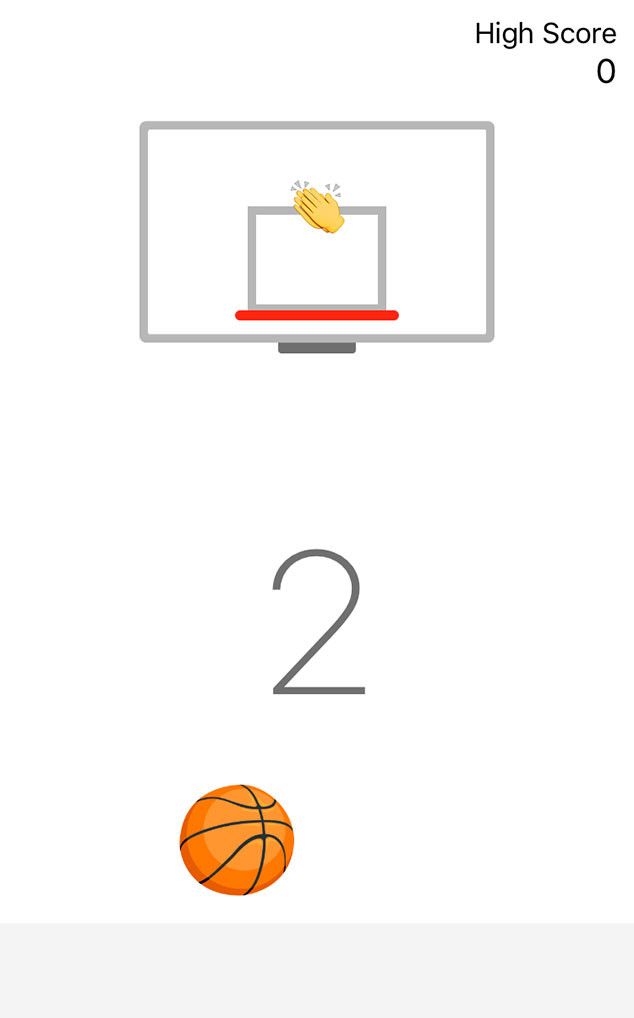
Rules of Basketball
How the rules have changed in your favorite game
How the rules have changed in your favorite game
WE ALL LOVE TO PLAY BASKETBALL, BUT DO YOU KNOW THE RULES EXACTLY?
Basketball was invented by James Naismith in 1891. Then everything was different: playgrounds, baskets, balls…
!!! Read about the evolution of balls in the article:
Basketball was invented by James Naismith in 1891. Then everything was different: playgrounds, baskets, balls…
!!! Read about the evolution of balls in the article:
The history of basketballs
The history of basketballs
What balls are played now and how it happened
The beginning
The rules have also changed a lot during this time. Initially, there were only 13 of them in basketball:
- The ball can be thrown in any direction with one or two hands.
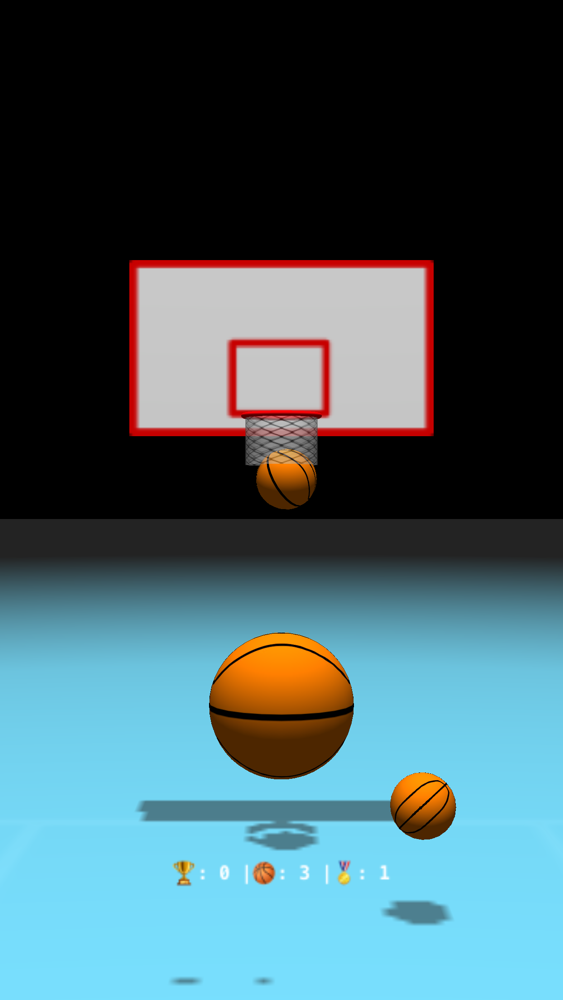
- The ball may be hit with one or both hands in any direction, but never with the fist.
- The player cannot run with the ball. The player must throw the ball from the point at which he caught it, except for a player running at high speed.
- The ball must be held with the hands. You can not use the forearms and body to hold the ball.
- In any case, hitting, grabbing, holding and pushing the opponent is not allowed. The first violation of this rule by any player shall be called a foul; the second foul disqualifies him until the next ball is scored, and if there was an obvious intention to injure the player, then a disqualification for the entire game. It is not allowed to replace a disqualified player.
- Punching the ball is a violation of points 2 and 4, the penalty is described in point 5.
- commit no foul).
- A point is scored if a ball thrown or bouncing off the floor hits the basket and stays there.
 Defending players are not allowed to touch the ball or basket while shooting. If the ball touches the edge and the opponents move the basket, then a point is scored.
Defending players are not allowed to touch the ball or basket while shooting. If the ball touches the edge and the opponents move the basket, then a point is scored.
- If the ball goes out of bounds, it must be dropped into the field by the first player to touch it. In the event of a dispute, the referee must throw the ball into the field. The thrower is allowed to hold the ball for five seconds. If he holds it longer, then the ball is given to the opponent. If either side tries to play for time, the referee must give them a foul.
- The referee must monitor the actions of the players and fouls, and notify the referee of three consecutive fouls. He shall have the power to disqualify players under rule 5.
- The referee must watch the ball and determine when the ball is in play (inbounds) and when it goes out of bounds (out of bounds), which side should be in possession of the ball, and any other action that the referee would normally take .
- The game consists of two halves of 15 minutes each with a break of 5 minutes between them.

- The side with the most goals during this time period is the winner.
The most important rule change in the history of basketball is the introduction of dribbling. In the original version of the game, this was prohibited by paragraph 3 of the rules.
One of the first changes in the game and the rules was the replacement of the basket with a ring with a net. It seemed to be very inconvenient to climb after the ball every time after a hit. Around the same time, free throws, dribbling appeared, and the composition of the teams was fixed for 5 players on the court at the same time. Before that, in some matches, up to 50 people could be on the court at the same time. All this happened back in 1896-1897.
The emergence of FIBA (International Basketball Federation)
Basketball in the early 20th century became more popular and the rules in each country could be different. This was one of the reasons why FIBA appeared in 1932 year. At the first FIBA Congress, the teams were approved (5 people and 2 substitutes), and it was decided that after each goal there would be a throw-in in the center. This rule was removed after 4 years to reduce the advantage of tall players.
At the first FIBA Congress, the teams were approved (5 people and 2 substitutes), and it was decided that after each goal there would be a throw-in in the center. This rule was removed after 4 years to reduce the advantage of tall players.
Over the next few years, the main changes were related to the number of personal fouls, the number of players on the bench and the introduction of a time limit for getting the ball into the opponent's half of the court.
More changes came in 1952 after the Olympic Games. The game became very boring, because the teams held the ball, having received a minimal lead in the score. Everyone understood this and searched for solutions for several years in order to save the life of basketball. At 1954 Danny Biason proposed to the NBA to limit the time for the shot to 24 seconds. At the 1956 Olympics, there was a similar rule: it was necessary to make a throw in 30 seconds. At the same time, to add equality between defense and attack, another rule familiar to us appeared: you need to start dribbling the ball before the supporting leg comes off.
Then the game became similar to the modern one from a technical point of view: dribbling, shots, a three-second zone appeared. In 1979, the NBA added a three-point line, and in 19In 1984, FIBA also added an arc.
!!! An article about the evolution of the three-point shot and interesting facts:
10 interesting facts about the three-point shot.
10 interesting facts about the three-point shot.
Three-pointer evolution and insane records.
Changes in the rules and basketball since 1956 have included the number of free kicks, the situations in which these free kicks are given, and individual and team penalties. Some rules were introduced, and a few years later they were canceled. For example, the "3 for 2" rule: if a player was fouled in the shooting phase, then if one of the first two shots was missed, he could make another free throw. This rule was later removed.
Since the 1990s there have been constant changes: the emergence of alley-oops, changes in the timing and rewriting of the rules of running, which continue to this day.
From the most interesting: if the team has 0.3 seconds or less to throw the ball from behind, then it must be a one-touch throw. It takes at least 0.4 seconds to perform a full throw.
Derrick Fisher made similar throws:
And here is a small selection of videos of how they throw in 0.2 seconds:
Do you want to take your first steps in basketball or improve your basic skills? We have a Basic Basketball Skills workout for you. See the schedule and sign up:
SIGN UP
Coach: Yuriy Bespalov
- Professional player of the INANOMO 3x3 team;
- Champion of Russia 3x3 2019, 2021;
- Winner and medalist of the MOFB championship;
- MLBL Summer League MVP 2017;
- Multiple participant of Moscow Open;
- Champion of Moscow 3x3 2017;
- MVP GrunisCup 2017.
IF YOU LIKE THIS ARTICLE, DON'T FORGET TO SHARE IT WITH YOUR FRIENDS.
MORE ARTICLES FROM
BLOG
We write useful articles about basketball training, basketball shoes and everything related to this beautiful game.
Basketball in Moscow in winter
Free throw in basketball: technique and secrets of execution
Passes in basketball: basic types and technique of execution
Basketball terms everyone should know
How to increase the jump? 5 tips
9 definitions that every basketball player should know
September 28 3 min.
Ball in the basket - victory is yours
Basketball
This is a material about the basic rules of playing basketball. We also have a text about the risks of injury in sports.
Basketball is a team game with a ball. The goal of each team is to attack the opponent's ring and score the most points during the match. We tell you how not to break the rules in a tough fight for the ball and become a winner.
Basketballs
New collection
7 199 ₽
Puma | Basketball ball PUMA Basketball Top Leather
Buy
-30%
New collection
2 449 ₽
3 499 ₽
Demix | Basketball ball Demix DB4000 Composite
Buy
-30%
New collection Demix | Basketball ball Demix DB4000 Composite
Buy
1,199 ₽
Demix | Basketball ball Demix DSB Streetball
Buy
Demix | Basketball ball Demix Skywalk
Buy
1999 ₽
Demix | Basketball ball Demix 3х3
Buy
Final price
Demix | Basketball ball Demix Hoops
Buy
1 399 ₽
Demix | Basketball ball Demix Triple Double 7
Buy
1 399 ₽
Demix | Basketball ball Demix Triple Double 5
Buy
Final price
Demix | Basketball ball Demix Buzzer 5
Buy
2 399 ₽
Demix | Basketball ball Demix Fast Break
Buy
Final price
Demix | Basketball ball Demix Buzzer 7
Buy
Each basketball team consists of 12 players who substitute for each other during the match.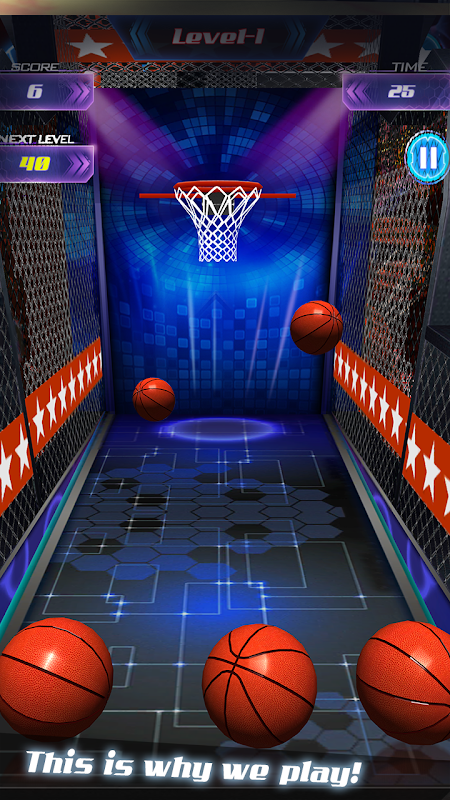 At the same time, five people from each team are on the site.
At the same time, five people from each team are on the site.
According to the rules of basketball, the whole team must have the same uniform and even socks of the same color. Jerseys of team members must be numbered.
For safety, remove jewelry and any accessories that could injure other players.
The game consists of four periods of 10 minutes. Breaks between the first and second quarters, as well as between the third and fourth, are 2 minutes. The longest break is 15 minutes, it is taken in the middle of the game, after the second quarter. At this moment, the teams change rings.
If the score is tied by the end of the match, the referee adds 5 minutes of overtime. Overtime is appointed as many times as necessary until the winner is revealed.
A team coach may take a time-out during a game. This break lasts for a minute. Most often, a time-out is taken to adjust tactics.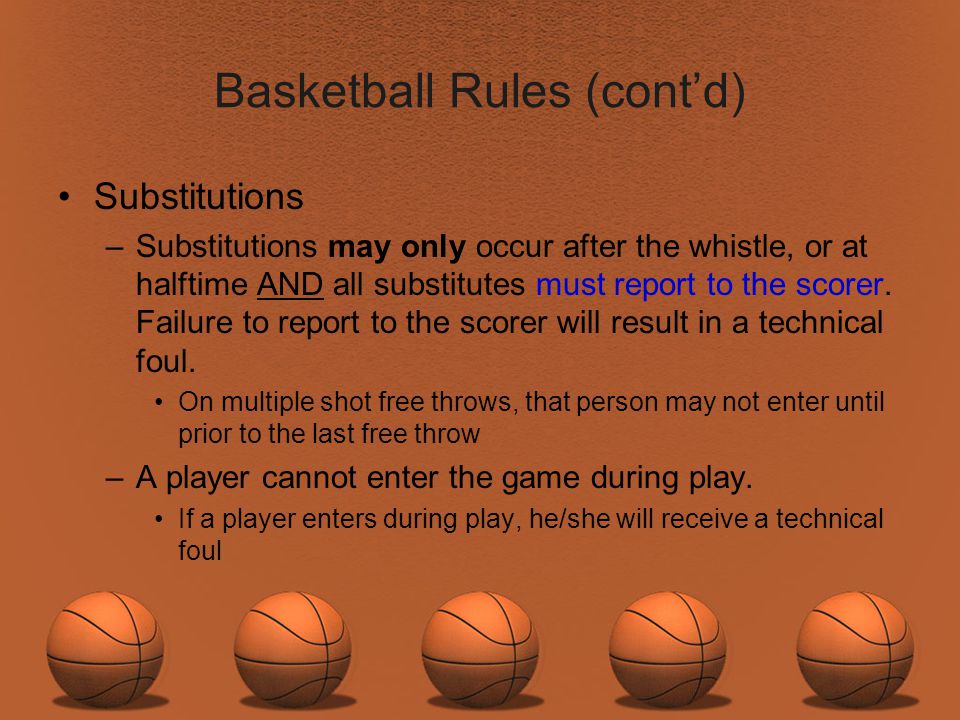
Basketball accessories
Demix | Needle for inflating balls (3 pcs.) Demix
Buy
Demix | Whistle Demix
Buy
Demix | Demix Basketball Hoop Net
Buy
Demix | Demix ball inflation needle, 3 pcs.
Buy
Demix | Demix ball pump
Buy
Demix | Whistle Demix
Buy
Demix | Demix Double Action Pump
Buy
Demix | Demix Basketball Hoop Net
Buy
Demix | Demix Double Action Pump
Buy
Demix | Demix ball pump
Buy
Demix | Demix ball pump
Buy
Demix | Whistle Demix
Buy now
Basketball court measures 28 meters long and 15 meters wide.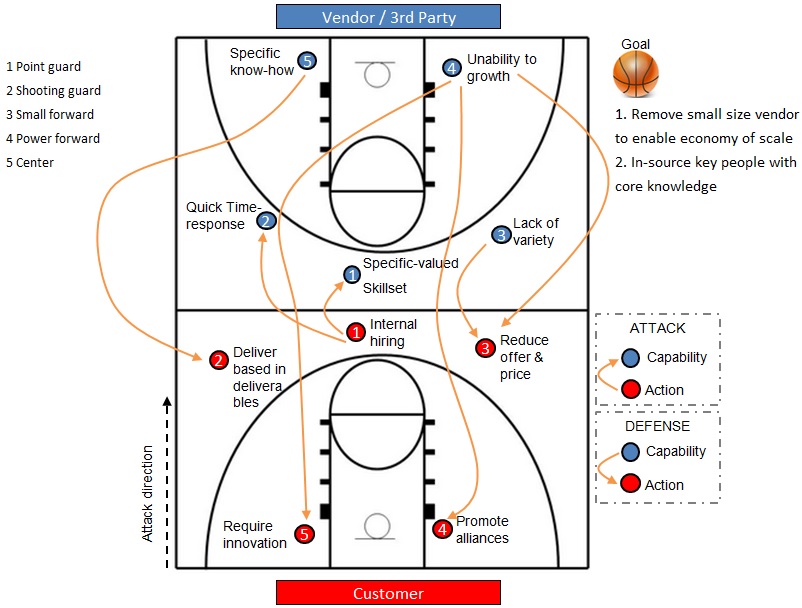 Each site should have markings. It is applied around the perimeter and zones are designated:
Each site should have markings. It is applied around the perimeter and zones are designated:
- center circle
- free throw line
- three-point area
- face-off lines
- restricted area
- semi-circle without fouls and collisions
Mandatory ring element4 It is hung at a height of 3.05 m.
In basketball, the ball is played only with the hands, it can be hit on the floor, passed, thrown and hit. You can’t run without a lead or kick the ball with him.
With the ball in hand, you can take two steps, but only to stop, pass or shoot into the ring.
Basketball shoes
New collection
7999 ₽
361° | Sneakers for men 361° Pull up 1.5
Buy
3 499 ₽
Demix | Sneakers for boys Demix Backyard Rld
Buy
14,999 ₽
Puma | Men's sneakers PUMA Fusion Nitro Black Fives
Buy
12999
Puma | Men's sneakers PUMA Rs-Dreamer Super Mario 64
Buy
$99. 99
99
Puma | Sneakers for boys PUMA Court Rider I Jr
Buy
3 639 ₽
5 199 ₽
Demix | Sneakers for men Demix Argon 2
Buy
3 219 ₽
4 599 ₽
Demix | Sneakers for men Demix Beast 2
Buy
3 499 ₽
Demix | Sneakers for boys Demix Backyard Rld Mesh
Buy
2 349 ₽
4 699 ₽
Demix | Sneakers for boys Demix Backyard Rld Mesh
Buy
5 799 ₽
Demix | Sneakers for men Demix Joker
Buy
1,899 RUB
3,799 RUB
Demix | Sneakers for boys Demix Buzzer
Buy
- 1 point - counts behind the penalty throw
- 2 points - for a ball abandoned from the zone of biases
- 3 points - for a ball abandoned from the three -point hits
violations in the basketball, let's take it a race basic.
Jogging is the movement of a player with the ball in his hands without dribbling. For this, the referee appoints a throw-in by the opposing team.
Three second rule - a player of the attacking team cannot be in the allocated area under the ring for more than three seconds. For such a violation, the ball is transferred to the opponent.
Foul is a touch on the opponent that restricts his freedom of movement. In some cases, a free throw is awarded for a foul - this is decided by the referee. A throw from the penalty line is performed by a member of the opposing team, for a professional this is an almost guaranteed hit.
You can also get a foul without contact - technical. It is given for unsportsmanlike behavior, disrespect for the referee or other participants in the game.